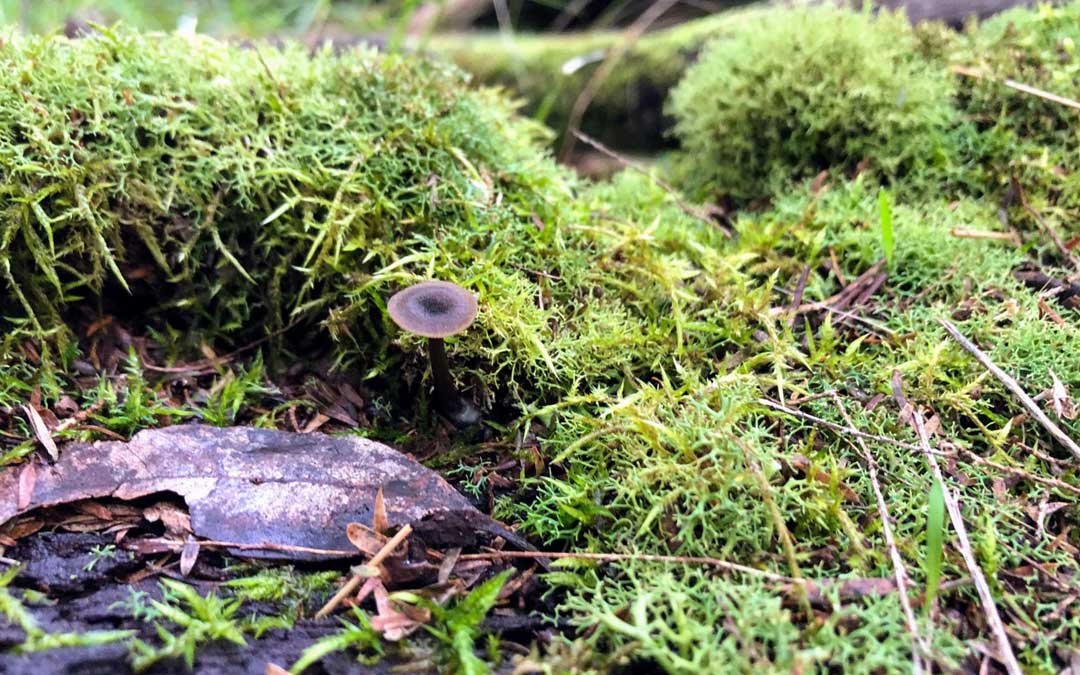8 cool things about mosses

Until recently I’ve never paid mosses much attention. I’m ashamed to admit I remember peeling blankets of moss off rocks as a kid and building imaginary fairy villages with them.
Lately though, I’ve been appreciating their beauty as they reappear in the bush and around my garden, so I’ve been learning more about them. I’m far from an expert (and am not good at identifying species yet), but here are some cool things I’ve learnt about them.
1. Mosses (and liverworts and hornworts) are part of a group of plants called bryophytes.
Bryophytes are part of a larger classification called cryptogams, which includes algae, fungi, slime moulds and lichens. There are estimated to be about 2000 species of bryophytes in Australia. The vast majority of bryophytes in Australia (about 1800) are mosses.
2. They don’t produce flowers or seeds
Mosses reproduce through spores or through division. When mosses reproduce through spores, it mixes the genetics of two plants to create a capsule of spores. Often these are visible as little pods on stalks (as in the photo below). These spores – when dispersed in the wind or water – can travel extremely long distances, but also often germinate as new plants close by. When mosses are broken apart, each section can create a genetically identical clone of the original plant – just like when you propagate a shrub using a cutting or divide a single clumping plant into multiple new plants. Mosses existed on Earth before flowering plants.

3.They play a crucial role in our landscape
Mosses are often the first plants to colonise a disturbed area or a newly exposed rocky outcrop. They take nutrients from the air and deposit them into the soil, stabilising, protecting and improving the soil. They absorb lots of water and then slowly release it, making water accessible to other plant roots. They capture airborne debris and create moist beds where other plant seeds can germinate. They create habitat for small invertebrates and some animals use mosses as nesting material.
4. They don’t have a vascular system
Most plants have a complex system that transports water and nutrients to all parts of the plant. A very simplified way to visualise this is a tree using roots to gather water from the soil and then transporting it through stems to leaves. But bryophytes existed long before plants evolved these vascular systems. They use a process of diffusion to spread nutrients to other cells. As plants got bigger, they developed vascular systems to transport nutrients and water up long trunks etc.
5. They don’t have real roots
As mosses don’t have a vascular system, they have no use for roots like most other plants do (they can’t use roots to take up and transport water or nutrients from the soil or substrate they are growing on). They instead have rhizoids which look like roots, but function differently as they are used to attach to the log, rock, soil or other substrate they are growing on. Mosses use photosynthesis to produce their own energy and absorb nutrients directly from the air or water through their surfaces.
6. Relatively little is known about mosses
The study of mosses and other bryophytes is inconsistent across the world because it is a niche area of botany. In areas where there are more bryologists, there is more knowledge. In areas where there are few, little is known.
7. There are mosses all over the world
We do know that there are mosses in many different types of ecosystems, from tropical rainforests to semi-arid areas to arctic regions. They can grow in freezing climates, including Antarctica. In fact, mosses grow almost everywhere except the ocean. Like other flora and fauna, there are native and introduced species of moss in Australia. Some mosses only grow on certain types of decaying wood, while others are less fussy and will grow in lots of regions and on lots of substrates.
8.They can completely dry out but still survive
Mosses can completely desiccate and become dormant in very hot weather, but once they receive water again, they spring back to life and begin to photosynthesise again. That’s why they are so visibly abundant at the moment.
If you’d like to know more about bryophytes, check out the Australian National Herbarium’s Australian Bryophytes page, or this Mosses, liverworts, fungi and lichens of Melbourne’s Middle Yarra region brochure produced by Banyule, Manningham, Nillumbik and Whitehorse councils.
Words and images by Jen Willis
